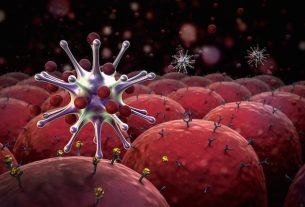Some options for home remedies for varicose veins are drinking ginger tea or rosemary tea, regularly consuming grape juice or applying a natural lotion prepared with comfrey and lemon balm to the skin, as they have anti-inflammatory, antioxidant and healing agents, which help to alleviate the symptoms of varicose veins such as pain or heaviness in the legs, itching or skin sensitivity.
Furthermore, home remedies help to improve blood circulation, activate circulation, increase the strength of the vein walls and improve blood return, relieving the symptoms of varicose veins and improving the appearance of the skin.
Home remedies are a good option to help alleviate the symptoms of varicose veins, and although they cannot replace medical treatment, they can be used to complement the treatment recommended by the angiologist.

Some home remedy options for varicose veins are:
1. Ginger tea
Ginger has phenolic compounds such as gingerol, chogaol and zingerone that have antioxidant and anti-inflammatory properties, which help to improve blood flow in the vessels, being very useful for relieving the symptoms of varicose veins such as pain or a feeling of heaviness in the legs, in addition to to improve the appearance of the skin. Discover other benefits of ginger.
Ingredients
- 1 cm of ginger root, cut into slices or grated;
- 1 liter of boiling water.
Preparation mode
Bring the water to a boil and add the ginger. Let it boil for 5 to 10 minutes. Remove the ginger from the cup and drink the tea in 3 to 4 divided doses throughout the day.
Another option for making tea is to replace the root with 1 teaspoon of powdered ginger.
This tea should be avoided by people with stomach ulcers, as it has anticoagulant properties that can increase bleeding or hemorrhage.
2. Rosemary tea
Rosemary tea has antioxidant and anti-inflammatory effects that can help alleviate the symptoms of varicose veins, such as feeling of heavy legs, itching or skin sensitivity.
Ingredients
- 5 g of fresh rosemary leaves;
- 250 mL of boiling water.
Preparation mode
Add the rosemary leaves to the boiling water, cover and let it rest for 5 to 10 minutes. Strain, let cool and drink 3 to 4 times a day.
Rosemary tea should not be consumed by children under 5 years of age, pregnant or breastfeeding women, or by people who have liver disease, as this tea can worsen symptoms and the disease.
Furthermore, rosemary tea can interact with some medications, such as anticoagulants, diuretics, lithium and medications for diabetes or to regulate blood pressure, and therefore, if the person is using any of these medications, it is important to consult a doctor. before drinking tea.
3. Comfrey and lemon balm lotion
The comfrey and lemon balm lotion is rich in allantoin, phytosterols and essential oils, with anti-inflammatory, healing and calming effects, which help to improve the appearance and sensitivity of varicose veins.
Ingredients
- 6 pariparoba leaves;
- 4 comfrey leaves;
- 1 spoon of lemon balm;
- 500 mL of alcohol;
Preparation mode
In a clean, dry glass container, add the alcohol and the other ingredients, leaving to rest for 24 hours. At the end of this time, using a clean cloth, apply this lotion to the varicose veins, 2 to 3 times a day.
4. Grape juice
Grape juice is a great home remedy for varicose veins, as it is rich in resveratrol, a substance with antioxidant properties that help fight inflammation in blood vessels, facilitate blood circulation and improve the appearance of skin with varicose veins. See other health benefits of resveratrol.
Ingredients
- 1 glass of water;
- 1 glass of black grapes.
Preparation mode
Blend the ingredients in a blender and drink afterwards. Preferably, you should drink grape juice unsweetened, but if you feel necessary, you can use healthier forms such as honey, sugar cane molasses or stevia.
Another possibility is to buy concentrated organic grape juice and dilute it in a little water, and drink it daily.
Read too: 7 health benefits of grape juice (with healthy recipes)
5. Milk thistle compresses
Compresses made with milk thistle tea are also a great home remedy for varicose veins, they contain an active substance, silymarin, which has a powerful antioxidant effect that helps alleviate the symptoms of varicose veins and brings a feeling of well-being.
Ingredients
- 1 teaspoon of milk thistle fruits;
- 250 mL of boiling water.
Preparation mode
Add the fruits to the boiling water and let them rest for 15 minutes. Once warm, strain and apply, with the help of a tissue, to the areas to be treated.
6. Kale compress
A good natural remedy for varicose veins and spider veins on the legs is to apply a warm compress made with cabbage leaves because they help reduce the inflammation of the vessels, relieving the symptoms of varicose veins.
Ingredients
Preparation mode
Heat the cabbage leaves in the microwave for a few seconds and apply to the varicose veins and leave to act until it cools. Next, wash this area with cold water as this improves blood circulation.
7. Horse chestnut tea
Horse chestnut tea is a great option for a natural remedy for varicose veins, as it has properties that help improve blood circulation, increasing the strength of the vein walls and improving blood return, preventing varicose veins.
Ingredients
- 2 sachets of horse chestnut;
- 500 mL of boiling water.
Preparation mode
Combine the ingredients in a pan and let it rest for about 10 minutes. Leave to cool, strain and drink 3 cups after meals.
8. Witch hazel cha
Witch hazel tea helps to strengthen the veins and reduce inflammation, preventing the veins in the legs from dilating too much, causing an increase in varicose veins.
Ingredients
- 5 g of dried witch hazel leaves;
- 500 mL of boiling water.
Preparation mode
Add the ingredients to a pan and let it rest for 5 to 10 minutes. Strain and drink 2 cups a day.
9. Lavender, lemon and St. John’s wort oils
Using essential oils to treat varicose veins is a natural way to activate circulation and reduce discomfort and itching that can cause wounds and inflammation.
Ingredients
- 8 mL of sunflower oil;
- 2 drops of St. John’s wort essential oil;
- 2 drops of lavender essential oil;
- 3 drops of lemon essential oil.
Preparation mode
Mix all the ingredients and apply a massage to the area. In the case of massages to treat varicose veins, you should not massage insistently over the varicose vein, but in a broad and gentle manner in circular movements from the feet to the thighs.
10. Cypress and yarrow essential oils
This mixture of essential oils helps to activate circulation and relieve itching and discomfort caused by varicose veins.
Ingredients
- 125 mL of witch hazel extract;
- 10 drops of cypress essential oil;
- 10 drops of yarrow essential oil.
Preparation mode
Place all ingredients in a container and mix well. Apply to the legs whenever desired to relieve inflammation.

Sign up for our newsletter and stay up to date with exclusive news
that can transform your routine!
Warning: Undefined array key "title" in /home/storelat/public_html/wp-content/plugins/link-whisper-premium/templates/frontend/related-posts.php on line 12
Warning: Undefined array key "title_tag" in /home/storelat/public_html/wp-content/plugins/link-whisper-premium/templates/frontend/related-posts.php on line 13



